Cyrus Lyric - £3,000
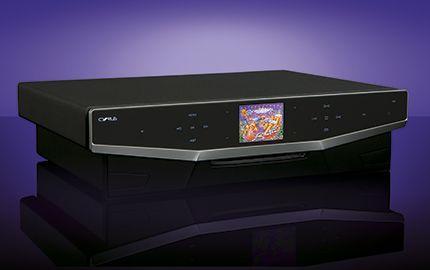
It’s official, and you heard it here first – we don’t live in the seventies anymore. Like David Bowie, times have changed. He’s no longer the Thin White Duke and the world isn’t buying huge amounts of separates. Life moves on, and so does the way people play music. Which is not to say the specialist audio market is set to disappear; there are many companies that make a good living from a UK sector worth £200 million a year.
Trouble is, though, by its very nature the hi-fi market is rather exclusive. Audiophiles like their fancy gear and aren’t too bothered if no one else does. On the other hand, most people have never wanted anything more than a quality machine to play their music on. Cyrus’ new Lyric 09 attempts to bridge this gap, bringing serious audio engineering to the stylish systems market in a people-friendly package. It’s the top of the new Lyric range, the other being the £2,250 Lyric 05, which lacks some of the 09’s special audiophile tuning.
This new Cyrus has a style all of its very own and has obviously been well made – and in Britain. It’s a sort of one-box Cyrus ‘greatest hits’ package, containing much of the technology of the company’s high-end separates in a single box. For example, its CD mechanism is effectively a rehoused CDt, complete with slot-loading Servo Evolution II mechanism – claimed by Cyrus to be “the world’s most accurate CD-reading device”. It has been measured to have 20 percent fewer errors than the next best OEM kit available to the trade, the company says. The streaming section uses the engine developed for the Stream X, with 24/192 and wide codec compatibility. This feeds a preamplifier not a million miles away from the Cyrus Pre XP, and a range of digital inputs which go through the company’s 32-bit DAC, also seen in the Cyrus 8 DAC, and this uses high-quality op-amps and tuned audio circuits. The manufacturer is proud of the headphone amplifier, which uses a circuit developed for a separate standalone headphone amp that never came to market. It has a dedicated power supply and is said to be very carefully laid out.
One key design criterion for the Lyric was that it needed to be able to drive practically any loudspeaker, but also use relatively little power doing so, and so a Class D output stage was chosen. But this was no simple implementation of any old chip; instead the company auditioned a large number, then set about perfecting it for the Lyric. Technical director Peter Bartlett is quite candid; he admits the company’s expertise has traditionally been in coaxing the best out of Class AB amplifiers, with much of the tweaking process down to the choice of passive components in the signal path. But with Class D, an entirely new approach was needed, the learning curve that the R&D team found itself on explains the fact that this product took three years to get to market. It employs a development of the well-established Cyrus analogue power supply, which makes for an impressive quoted 170W RMS per channel.
Pull the Lyric out of the attractive packaging, and it won’t take long to set up. The unit uses a single mains lead (heaven for those that don’t like clutter), standard speaker binding posts (thankfully), and has a welter of inputs around the back. You’ll need to screw in the wi-fi antenna and DAB aerial, and connect up its single RCA line input if you have an analogue source you wish to use. Those who play out computer audio will also wish to hook up a USB-B cable, and folks with iPods can also connect up their gadgets via another USB-A input. There are electrical and optical digital inputs too, for TVs, PlayStations and suchlike. The Lyric also hooks up to Bluetooth devices (via the fine sounding aptX codec) and last but not least has uPnP streaming built in. In short, every base is covered with the obvious exception of a phono input. However, vinyl spinning owners can, of course, buy an offboard phono stage and hook it up via the RCA line input.
The Lyric has three main ways of working. First is the unit’s own touch-sensitive front panel, which is a nice user interface and marries up well to the touch screen. The main problem is that there’s also a swish remote control – complete with backlighting and a motion sensor that turns this on and off whenever you move it, that does the job even faster. There’s also Cyrus’ Cadence app (iOS or Android), which is easier still. Which to use?
The machine generally feels very good to use. My biggest issue is that it introduces a new design language and form factor which isn’t (yet) recognisably Cyrus. This won’t be an issue for many, as I suspect the Lyric will pull a whole new type of buyer in – which is precisely what it has been designed to do. What you will discover, though, is that it’s a lovely product to use.
Sound quality
The purist ‘elephant in the room’ is the Lyric’s use of Class D power amplification. Some believe its sound is too compromised, but several days of continuous use disabuse me of this notion, at least as far as this Cyrus is concerned. Properly run in and warmed through, it proves a highly enjoyable sounding product across all sources. It’s crystal clear that Cyrus has got Class D sounding right, indeed it’s surprisingly close to the ‘house sound’ it gets from its Class AB power amplifiers – a bubbly, rhythmically engaging sound with lots of life, fine dynamic accenting and lots of detail.
Starting with an external CD transport into the unit’s coaxial digital input, the Lyric 09 pushes Donald Fagen’s Tomorrow’s Girls along like a steamroller. The power amplifier section proves really impressive driving a range of loudspeakers, from easy Focal 948s to tricky Yamaha NS1000Ms. In both cases, the result is surprisingly musical, with strong and articulate bass that is as able to play tunes as well as any good-quality integrated amp. There is absolutely no sense of it compressing the music, even at high programme levels.
Running the system from the internal CD drive is particularly impressive; the disc transport is obviously excellent. Again it has that propulsive Cyrus Servo Evolution sound, one that shuffles the music along and ekes out loads of detail. As one-box systems go, this has to be one of the finest disc transports around. Fed from a MacBook Pro running Audirvana Plus, its USB input shows redoubtable ability. Via the streamer, Kate Bush’s Snowflake at 24/96 is beautifully carried, with rich and engrossing piano work. Her voice – often a chore for solid-state amplifiers – is smooth and subtle, with no sense that the system is trying to flatten or harden it. Again, the lower frequencies amaze, with seemingly effortless reserves of power for those crashing piano cadences.
The Cyrus wows me from its analogue input, too. A Michell GyroDec turntable via a Trichord Dino phono stage makes a beautiful job of a rare and expensive ‘blue triangle’ first pressing of Pink Floyd’s Dark Side of the Moon. Breathe sounds enjoyably warm and mellifluous, and it throws out a wonderfully wide and deep soundstage, showing just how capable its amplifier section is. Fed an absolutely tip-top source, it rises to the challenge, and then some.
Tonally the Cyrus isn’t a radical departure from the company’s separates amplifiers, meaning it’s on the spry, crisp and dry side of neutral – you’d never confuse it with a sumptuous, warm tube amp. But it is open and transparent enough to let the full flavour of that original and beautiful EMI Abbey Road recording flood out, and the result is a mesmeric sound. This is quite a contrast to the Bluetooth input – which gives as good a sound as I’ve heard playing a 256kbps AAC file of Scritti Politti’s Perfect Way from an iPad, but it’s never going to match vintage vinyl via a top turntable!
The really impressive thing about the Lyric 09 is it sounds great across all sources. The streamer and CD drive are superb, the sensitive DAB radio doesn’t let the show down and the analogue input is excellent. It underlines the fact that the Lyric has been designed as a complete package that uses the technology and philosophy behind Cyrus’ popular range of separates. Spending the same amount of money mixing and matching components from a range of manufacturers might give a slightly superior sound, but not by much. I suspect many would regard it more as different, rather than better.
Conclusion
The intention of the Lyric 09 to give serious grown-up hi-fi sound in a scaled-down single-box package, across a wide range of family-friendly sources has been achieved. It might not quite have the operational sophistication of designs from, say, Bang & Olufsen, but it isn’t far behind and the sound quality is dramatically better, as is the build.
If you’re an audiophile looking to downsize, or a music lover with an understandable aversion to hi-fi clutter, then this is an excellent package – and indeed one of the very best of its type yet offered.
LIKE: Excellent sound across all sources; versatility; ease of use
DISLIKE: More analogue inputs wouldn’t hurt!
WE SAY: Nothing less than a superb high-end one-box hi-fi system
DETAILS
PRODUCT Cyrus Lyric 09
ORIGIN UK
TYPE One-box system
WEIGHT 9kg
DIMENSIONS (WxHxD) 420 x 105 x 320mm
FEATURES
• Claimed 170W RMS per channel into 8ohms
• 24/192 upsampling DAC with digital, USB and Bluetooth inputs
• DAB, FM and internet radio
• App, remote and touchscreen control
DISTRIBUTOR Cyrus Audio Ltd
TELEPHONE 01480 410900
WEBSITE cyrusaudio.com
 |
Inside this month's issue: Arcam Radia A25 integrated amp, iFi Audio iDSD Diablo 2 DAC/headphone amp, Eversolo DMP-A8 streamer/DAC/preamp, Line Magnetic LM-845IA valve amp, Record Store Day Spring Drop, standmount loudspeaker Group Test and much, much more
|



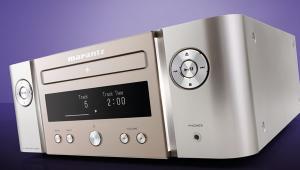
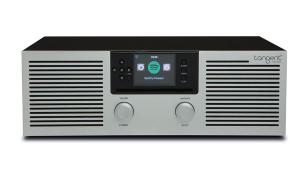



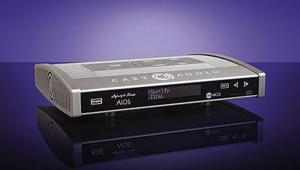
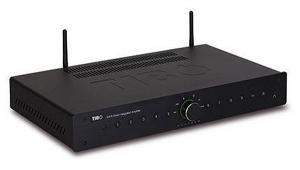

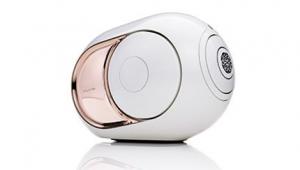
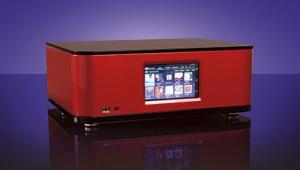

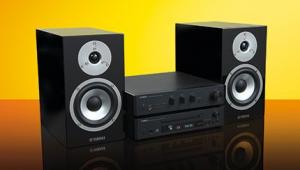
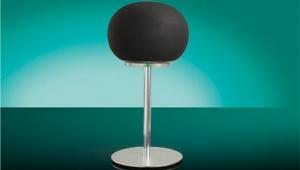






























.jpg)



